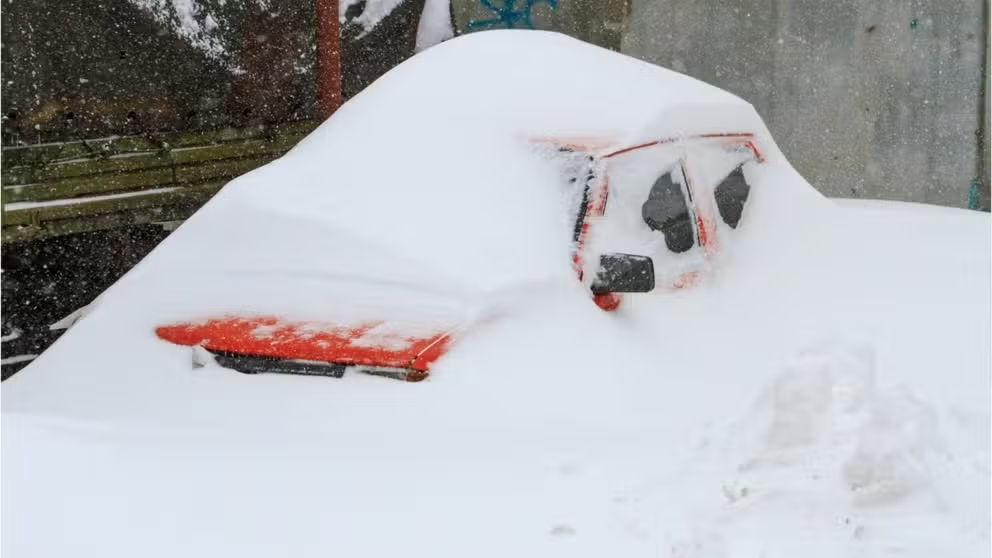What is a snowdrift?
The cold, winter season can bring snowdrifts, mounds of snow piled up by the wind. These piles can be both mountains and molehills.
What is a snowdrift?
The cold, winter season can bring snowdrifts, mounds of snow piled up by the wind. These piles can be both mountains and molehills.
Wind-driven snow could create some large snowdrifts that can leave people digging out their houses and cars.
Snowdrifts are mounds of snow piled up by the wind. They can range in size and grow up to several feet high.
Here are seven things you should know about snowdrifts.
1. It's all about speed.
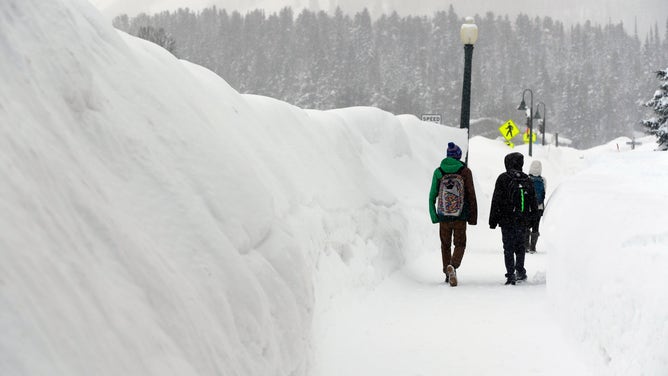
Snow drifts dwarfed pedestrians in Crested Butte, Colorado in 2017.
(Photo by Helen H. Richardson/The Denver Post via Getty Images / Getty Images)
Strong winds carry snowflakes, whether out of the sky or off the ground. When the wind slows down, gravity takes over and the flakes fall to the ground.
A solid structure like a car or a wall can slow down the winds enough for the snow to deposit in a pile called a snowdrift. Even something more porous like a stand of trees or a slatted fence can also create a snowdrift.
2. They can bury things
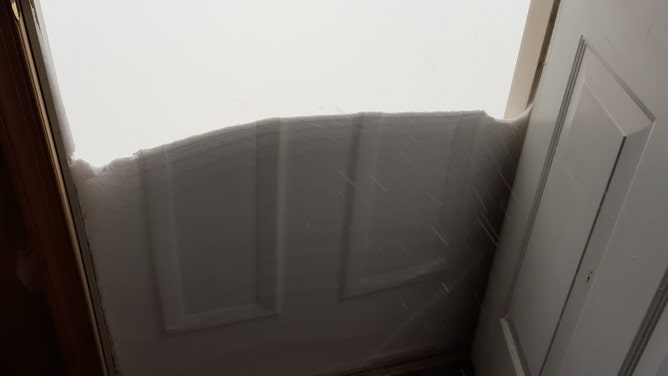
The homeowner opened the front door to find a snowdrift with the imprint of the door.
(Captain Albert E. Theberge with NOAA)
While they make for amazing pictures – just picture having to shovel your way out of your front door or having to dig out your car that's covered up to the windows.
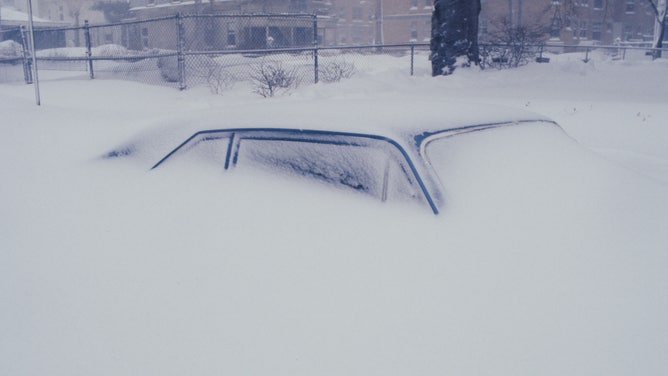
A car buried in a snowdrift on a street in Cambridge, Massachusetts during the 'Blizzard of '78'.
(Photo by Barbara Alper/Getty Images) / Getty Images)
3. Snowdrifts are dense

The train City of San Francisco was stuck in snowdrifts in the Sierra Nevada for four days in 1952. The photographer used skis and snow shoes to get to the train before rescuers.
(Photo by Ken McLaughlin/San Francisco Chronicle via Getty Images / Getty Images)
Just because the snow is wind-driven doesn’t mean it is any less dense.
In 1952, the city of San Francisco passenger train tried to plow through a drift in the Sierra Nevada range in eastern California.
Passengers were trapped for four days before they finally had to hike to the highway to be picked up by private cars.
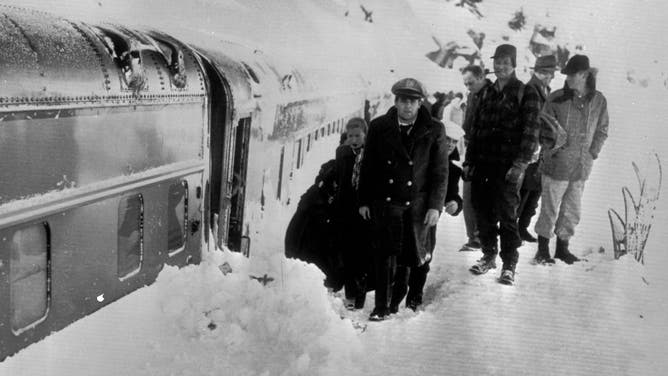
After four days, passengers braved the snow to get to the nearest highway to get out.
(Photo by Ken McLaughlin/San Francisco Chronicle via Getty Images / Getty Images)
Take a look at the mammoth snowdrift piled halfway up the second floor of a condo in Mammoth Mountain, California. The snow was so heavy, crews had to remove it from the roof to prevent damage. You can barely see the tractor plowing the snow in the foreground.
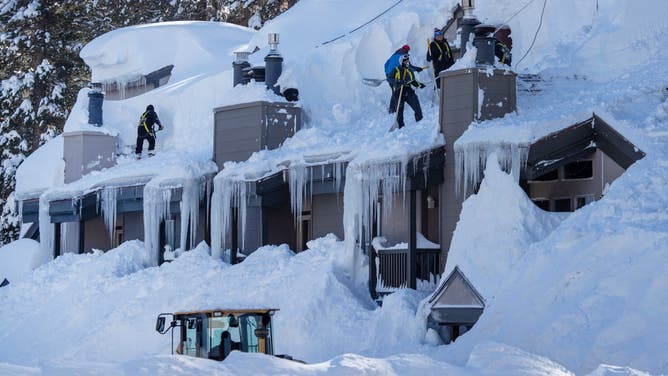
Snowdrifts covered nearly two stories of these condos in Mammoth Lakes, California.
(Allen J. Schaben -Los Angeles Times via Getty Images / Getty Images)
4. They can be very deep
Snowdrifts can become much deeper than the actual depth of the snow that fell. There have been reports of drifts that have grown to be as deep as a person is tall. That can be problematic if a person were to fall into a drift that size.
5. Blowing vs. drifting snow
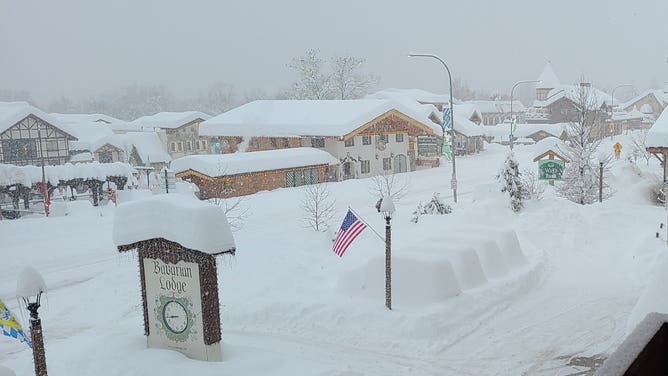
Multiple feet of snow fall in Leavenworth, Wash. on Jan 6, 2022.
(Jerry and Sharon Magin)
Blowing and drifting snow both make snowdrifts. Blowing snow is generally six feet or more above the ground and reduces visibility while drifting snow is below six feet. You can read more about these two types of weather here.
6. Tunneling is sometimes necessary
Sometimes the only way out is through. A snowdrift can become deep enough that shoveling the mountain of snow out of the way is virtually impossible. That's when people start tunneling through the drifts to create an exit or path.
Residents of Northampton, Massachusets, had to tunnel through a snowdrift after the blizzard of 1888.

A tunnel cut through the snow drifts on Main Street after a blizzard, Northampton, Massachusetts, March 14, 1888. (Photo by Underwood Archives/Getty Images)
7. Wind can carry snow several miles
Wind can lift snow several feet off the ground and carry it several miles away. However, the distance is limited because snow tends to evaporate in the wind.
An agricultural engineer with the Iowa State University Extension wrote an article that said, "In fact, it is very difficult to blow snow more than several miles before most of it evaporates."
